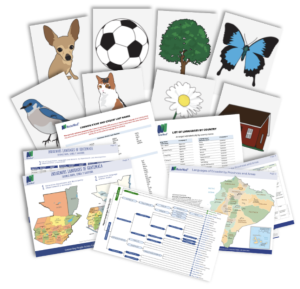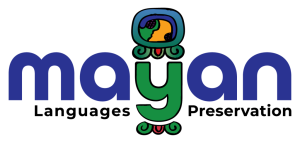An interview with Ludmila Golovine, MasterWord’s President & CEO
40% of the world doesn’t have access to education in their own language and as a result, millions of people fall into extreme poverty every year simply because they cannot learn a new language and a new subject at the same time. Imagine trying to learn mathematical or algebraic concepts in Chinese while not speaking Chinese. That's just as challenging.
How did MasterWord start working with Mayan languages?
MasterWord has been providing language access for over 30 years, and since the very first day we started, the motto of ‘No Language Left Behind’ has been at the core and the heart of our business. Every Limited English Proficient and Deaf and Hard-of-Hearing individual has a human right to have access to education, health care, government services, the same way as speakers of English language do here in the United States.
We have all recently been hearing about the migrant crisis on the southern border of the United States, and the plight of refugees from Central America. Refugees are entering this country for a better future, trying to escape from challenges, sometimes deadly threats that they are facing in their homeland, and so we’ve been faced with a challenge of speakers of marginalized languages that need language access.
Many people may not be aware of this but there are 30 Mayan languages being spoken by over 7 million people today. There are over 70 languages spoken in addition to Spanish in Mexico alone. And overall, in the world, there are over 7000 languages that are being spoken today.
So, as these refugees are coming into the United States, it has been our mission and goal to support every single speaker of every language and make sure they can communicate. Giving a voice to those without one, respecting the fact that language rights are human rights is what inspired MasterWord to focus on providing language access for speakers of Mayan and other Indigenous languages.

What challenges do Mayan language speakers face in the United States?
The challenges that speakers of Indigenous and rare languages face are similar, regardless of what language it is. Many of the Indigenous languages don’t have a presence online. We can spend a long time talking about digital rights and presence that are absent for many languages. Therefore, these individuals don’t have the same access to information and education.
There are no textbooks available in these languages, so we are facing the challenge of lack of terminology. For example, trying to get access to the legal system and translating or interpreting court terminology from English to Mayan presents a challenge. Interpreting medical terminology from English to Mayan presents a challenge because those words simply don’t exist, so interpreters are creating linguistic concepts and equivalence.
Sometimes, they have to explain a whole concept before a word or a series of words, can emerge to accurately translate the concept into another language while retaining the same meaning. For example, words such as email, electronic mail, that exist today in the English language, in the Mayan language, the equivalent of that has been translated as ‘fire mail’ or ‘lightning mail’.
There are many other interesting examples because concepts that exist today, such as ‘court hearing’, may need to be explained as you’re going to be appearing in front of a judge who will listen to your case and then make a ruling in accordance with the U.S. Justice system. Well, that’s a much longer translation than just the word ‘court hearing’ because an equivalent may not exist. This all differs based on culture, language, the situation, and the literacy level of the person present in front of you. So, the interpreter’s job becomes very challenging.
A translator’s job becomes even more challenging because now we’re faced with low literacy levels. That means that many translations have to take place in the text to voice format or there may be an option where you can also play the voice or hear the translation of the text at the same time. A lot of visuals need to be used when translating a text or when translating an explanation.
Again, this is because you are not only translating a concept from one language to another like we normally do in the translation and localization process. This is also because, in most cases, you are creating a new word in that language.
The other major challenge that speakers of Indigenous languages face is literacy rates because of unequal digital presence and unequal access to information. There’s not a lot of textbooks that are being published in Indigenous languages. There’s not much access to education that’s available in Indigenous languages.
In fact, 40% of the world doesn’t have access to education in their own language and as a result, millions of people fall into extreme poverty every year simply because they cannot learn a new language and a new subject at the same time. Imagine trying to learn mathematical or algebraic concepts in Chinese while not speaking Chinese. That’s just as challenging.
So, the reality we’re facing when working with speakers of Indigenous languages is low literacy levels. In the case of Mayan refugees, we’re facing up to 60, sometimes 70% levels of functional illiteracy in both English and Spanish. So that’s the second challenge, the linguistic one that the refugees are facing.
How do you identify what language a person speaks when that language may not be on the map of languages? You may not have heard that language name before. You don't know what the language is and so how do you figure out what language the person speaks?
How is MasterWord serving the Mayan and other Indigenous communities across the country?
At MasterWord, when we learned about the great need for interpreters for Mayan and other Indigenous languages, we decided to immediately focus on building a team to support such a need. We want to make sure that we have trained interpreters that know how to interpret in different settings, so we start by finding bilingual speakers who are fluent. We put them through our training programs available through the MasterWord Institute to make sure that we have a team that is ready and available to serve speakers of Mayan and other Indigenous languages.
The goal is to support hospital systems, the government organizations that we serve, and the school districts that are going to be seeing these individuals coming in as students or parents into the school system, and for them to be able to have access to an interpreter, both over the phone or virtually or in person, depending on the situation.
So, our response remains consistent with our core message ‘No Language Left Behind. Every person has the right for equal access to information, services, and health care. We wanted to make sure that speakers of all languages, speakers of Mayan languages, speakers of Indigenous languages have the same right to language access.
As we started working with speakers of Mayan languages and other Indigenous languages, we realized that there was another hurdle that our clients, government organizations, health care organizations were facing. How do you identify what language a person speaks when that language may not be on the map of languages? You may not have heard that language name before. You don’t know what the language is and so how do you figure out what language the person speaks?
So, we were able to create a language identification tool based on people being able to verbally recognize their language. Because, again, remember, a lot of the speakers of the language are people, many of whom are children, for reasons outside of their control, lack the necessary reading or writing skills to be able to properly identify their language.

That tool was designed to help social workers and frontline workers to be able to quickly identify what language access service they need to provide, and then just as quickly and efficiently connect with an interpreter.
Why is working with Mayan languages and other languages of limited diffusion important to you and to MasterWord?
I have a personal connection with Mayan languages. Believe it or not, I actually grew up around them. My great-uncle, Yuri Knorozov, decoded Mayan hieroglyphics back when he was a student in 1952 and then dedicated the rest of his life to studying Mayan culture, languages and other Indigenous languages and cultures in Latin and Central America. So, being able to serve speakers of Mayan and other Indigenous languages holds a very deep personal meaning for me as well.
What we’re looking at, believe it or not, today, about 3 billion people don’t have access to the Internet. If you think about it, it’s almost half of the world’s population. So, almost half of the world’s population is being left behind because of lack of access to information and the Internet in their language.
The importance of serving and working with speakers of indigenous and marginalized languages, the importance of equal language rights for all people, the importance of equal digital rights for all people is now really being heard and being brought to the top by organizations like UNESCO. First, it was the 2019 Year of Indigenous Languages and now the International Decade of Indigenous Languages. So, language rights are being put at the forefront of these conversations globally.
They’re also being discussed at professional translator and interpreter associations today, and in different settings around the United States and around the world. The importance for people to get an education in their own language is also critically important. So, the Indigenous and marginalized languages are now critically important, so that the other half of the world’s population can be just as successful as the rest of us who are so fortunate to be able to speak English or one of the mainstream languages.
‘No Language Left Behind’ is at the core of MasterWord. One of our key corporate values is doing business with heart. We want to make sure that every person, every speaker of any language is given the same voice. We want to make sure that we give the voice to those without one. We want to make sure that every person can communicate and that every person is heard. We want to make sure that there is true equity in access to health care, education and opportunity.
We want to make sure that every person has the same opportunity for success, and therefore, training language professionals and making sure that we have qualified language professionals for languages of limited diffusion, Mayan languages and other Indigenous languages are extremely important to MasterWord.
Investing in resources to support Mayan and other Indigenous languages is of critical importance to MasterWord as it exemplifies our core mission of connecting people across language and culture, and to do so without to leaving any language behind.

